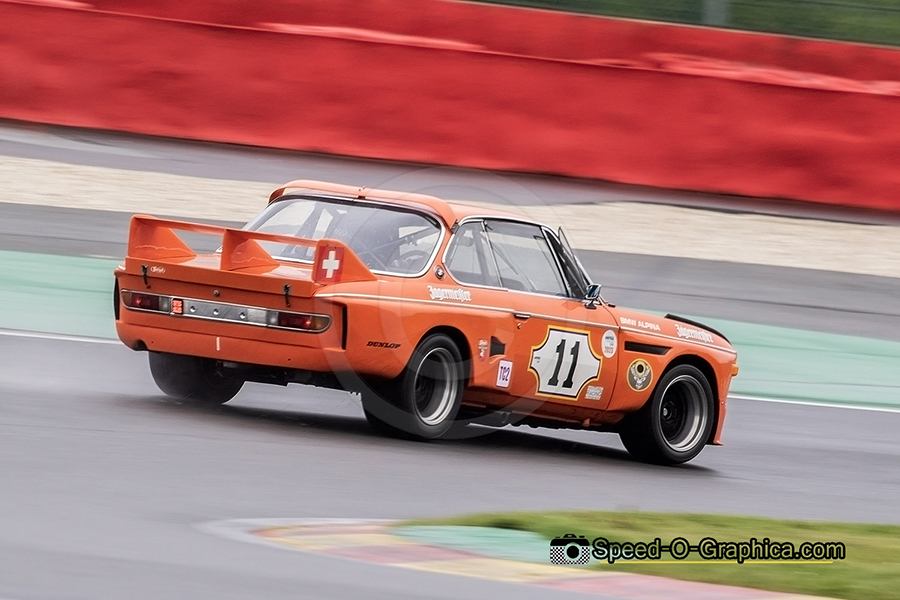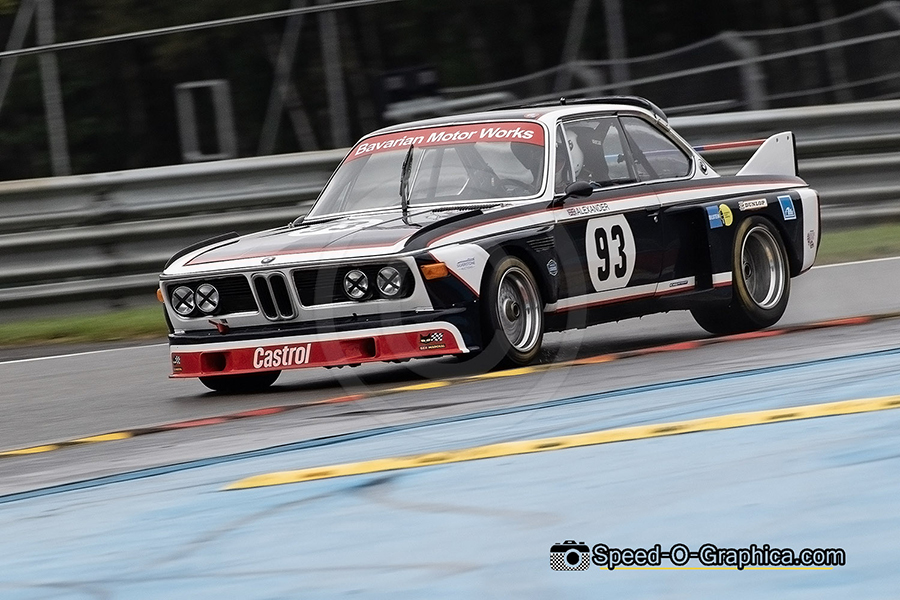BMW CSL, the Capri Beater: Part 2

We continue our story about the remarkable Batmobile with its racing history and an impressive list of victories.
Weight saving measures ensured that the empty weight of the CSL was reduced to almost 1065 kg. However, the final result of a top speed of just under 220 km per hour and acceleration from 0 to 100 in 7.4 seconds did not differ much from the 3.0 CSi. 500 CSLs went to the United Kingdom, although they retained the sound insulation, electric windows and standard bumpers.
BMW decided to make additional modifications to the engine when the required 1000 cars for homologation in Group 2 had not yet been reached by mid-1972. This resulted in a slightly increased engine displacement to 3,003 cc and homologation was achieved for the three to five litre class. The cars competed in racing with an engine bored out to 3.3 litres.

The second evolutionary stage of the 3.0 CSL, equipped with a 200 hp engine, reached a top speed of 218 km/h. 929 examples of this second version were built, followed from 1973 onwards by a further 167 models with a 206 hp 3.2 litre long connecting rod engine. That makes a total of 1,265 six-cylinder coupés from the E9 series that have an L in their last name.
BMW wanted to further develop the car aerodynamically, and so 100 more cars were built, considered the third evolutionary stage. These featured a large wing on the roof and on the trunk lid, which led to the nickname ‘Batmobile’.

Aerodynamic improvements, the wind splits on the bonnet and an enlarged engine up to 3,153 cc producing 206 hp at 5,600 revolutions per minute resulted in a top speed of almost 221 km/h.
The BMW CSL was intended for racing but for daily use the suspension comfort was again criticised. Furthermore power steering was only available at an additional cost for weight reasons. However, it proved to be an ideal platform for tuners, both optically and in terms of performance.
Many well-known companies such as Alpina, GS and Koepchen offered modified versions of the car. Schnitzer turned out to get by far the best out of the CSL, both visually and from the engine. They managed to extract 290 hp from the engine and created a real racing look using voluminous body extensions.

For racing in Group 5 BMW developed the 3.5-litre version, equipped with Kugelfischer mechanical fuel injection and a dry sump oiling system. More than 350 horsepower was generated from the M30 six cylinder engine. 12 inch-wide front and 14.5-inch-wide rear wheels necessitated wide fender flares. BMW ran a 24 valve evolution of the original engine generating around 440 hp.
Only 1,265 cars of the BMW 3.0 CSL were produced from 1971 to 1975. 169 belong to the first series, 929 to the second and 167 to the third series. Many fans consider it one of the most beautiful BMWs of all time because of its elegant lines. For racing enthusiasts, the design also benefits from the unusual aerodynamic package.

When BMW entered the battle with the Ford Capri RS with its own motorsport division in 1973, the engine capacity of the racing version of the CSL had grown to 3,340 cc generating 360 hp. The factory CSLs weighing 1,062 kg were superior to the Ford Capri RS and between 1973 and 1979 they won the European touring car championship six times and won the 24-hour race at Spa four times. At the Le Mans 24 Hours in 1973, BMW scored a significant class win with Toine Hezemans and Dieter Quester
European Touring Car Championship
- 1973 Toine Hezemans – BMW 3.0 CSL
- 1975 Siegfried Müller – BMW 3.0 CSL
- 1976 Jean Xhenceval – BMW 3.0 CSL
- 1977 Dieter Quester – BMW 3.0 CSL
- 1978 Umberto Grano – BW 3.0 CSL
- 1979 Martino Finotto – BMW 3.0 CSL
Spa 24 Hours
- 1973 Toine Hezemans/Dieter Quester – BMW 3.0 CSL
- 1974 Jean Xhenceval/Alain Peltier/Pierre Dieudonné – BMW 3.0 CSi
- 1975 Pierre Dieudonné/Jean Xhenceval/Hughes de Fierlandt – BMW 3.0 CSi
- 1976 Jean-Marie Detrin/Nico Demuth/Charles van Stalle – BMW 3.0 CSL
In the 1976 World Championship for makes, the 3.5 CSL won three races
Silverstone with John Fitzpatrick and Tom Walkinshaw
Nürburgring with Albrecht Krebs and Dieter Quester
Oesterreichring with Dieter Quester and Gunnar Nilsson
Even after production of the CSL ended in 1975, the car was still regularly included in the winners’ lists in various racing series. Nowadays the BMW CSL remains a favourite among drivers and fans in the historic motorsports scene.
